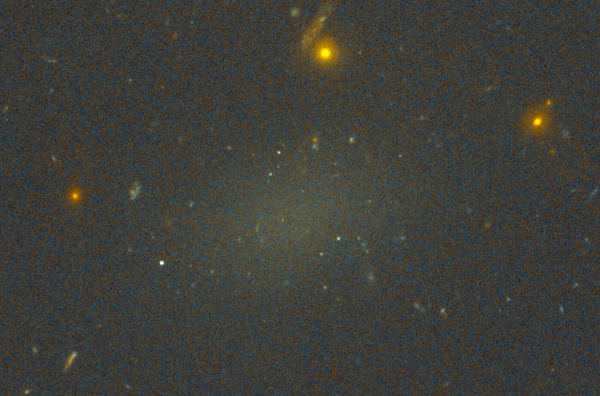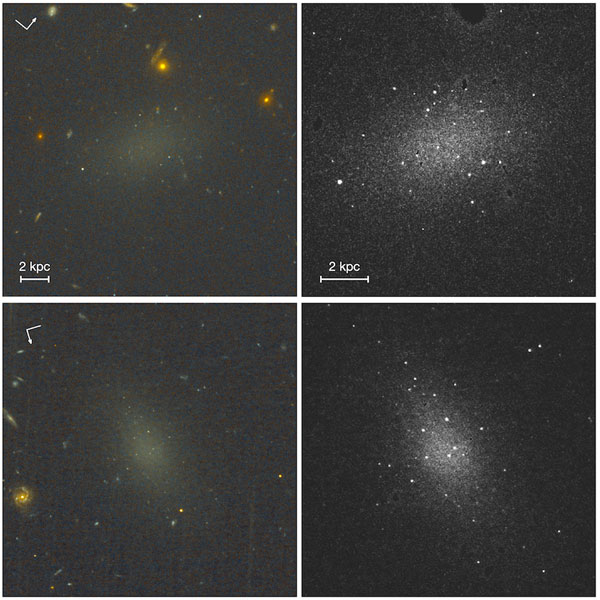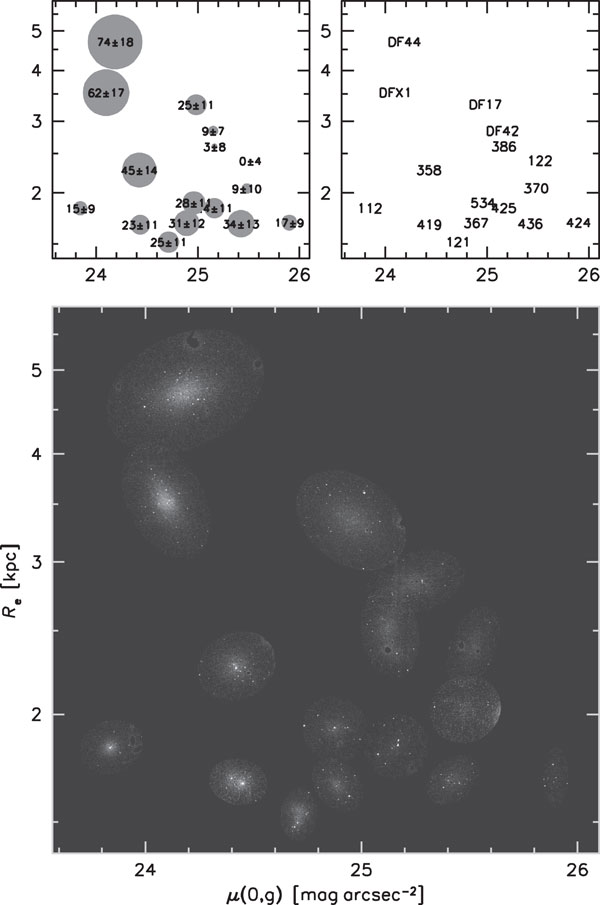The origin of ultra-diffuse galaxies (UDGs) has posed a long-standing mystery for astronomers. New observations of several of these faint giants with the Hubble Space Telescope are now lending support to one theory.

van Dokkum et al. 2017
Faint-Galaxy Mystery

van Dokkum et al. 2017
UDGs — large, extremely faint spheroidal objects — were first discovered in the Virgo galaxy cluster roughly three decades ago. Modern telescope capabilities have resulted in many more discoveries of similar faint galaxies in recent years, suggesting that they are a much more common phenomenon than we originally thought.
Despite the many observations, UDGs still pose a number of unanswered questions. Chief among them: what are UDGs? Why are these objects the size of normal galaxies, yet so dim? There are two primary models that explain UDGs:
- UDGs were originally small galaxies, hence their low luminosity. Tidal interactions then puffed them up to the large size we observe today.
- UDGs are effectively “failed” galaxies. They formed the same way as normal galaxies of their large size, but something truncated their star formation early, preventing them from gaining the brightness that we would expect for galaxies of their size.
Now a team of scientists led by Pieter van Dokkum (Yale University) has made some intriguing observations with Hubble that lend weight to one of these models.
Globulars Galore

van Dokkum et al. 2017
Van Dokkum and collaborators imaged two UDGs with Hubble: Dragonfly 44 and DFX1, both located in the Coma galaxy cluster. These faint galaxies are both smooth and elongated, with no obvious irregular features, spiral arms, star-forming regions, or other indications of tidal interactions.
The most striking feature of these galaxies, however, is that they are surrounded by a large number of compact objects that appear to be globular clusters. From the observations, Van Dokkum and collaborators estimate that Dragonfly 44 and DFX1 have approximately 74 and 62 globulars, respectively — significantly more than the low numbers expected for galaxies of this luminosity.
Armed with this knowledge, the authors went back and looked at archival observations of 14 other UDGs also located in the Coma cluster. They found that these smaller and fainter galaxies don’t host quite as many globular clusters as Dragonfly 44 and DFX1, but more than half also show significant overdensities of globulars.
Evidence of Failure

van Dokkum et al. 2017
In general, UDGs appear to have more globular clusters than other galaxies of the same total luminosity, by a factor of nearly 7. These results are consistent with the scenario in which UDGs are failed galaxies: they likely have the halo mass to have formed a large number of globular clusters, but they were quenched before they formed a disk and bulge. Because star formation never got going in UDGs, they are now much dimmer than other galaxies of the same size.
The authors suggest that the next step is to obtain dynamical measurements of the UDGs to determine whether these faint galaxies really do have the halo mass suggested by their large numbers of globulars. Future observations will continue to help us pin down the origin of these dim giants.
Citation
Pieter van Dokkum et al 2017 ApJL 844 L11. doi:10.3847/2041-8213/aa7ca2
Related Journal Articles
This article originally appeared on the AAS Nova website.
For more on dark galaxies, check out these articles:
 0
0









Comments
You must be logged in to post a comment.